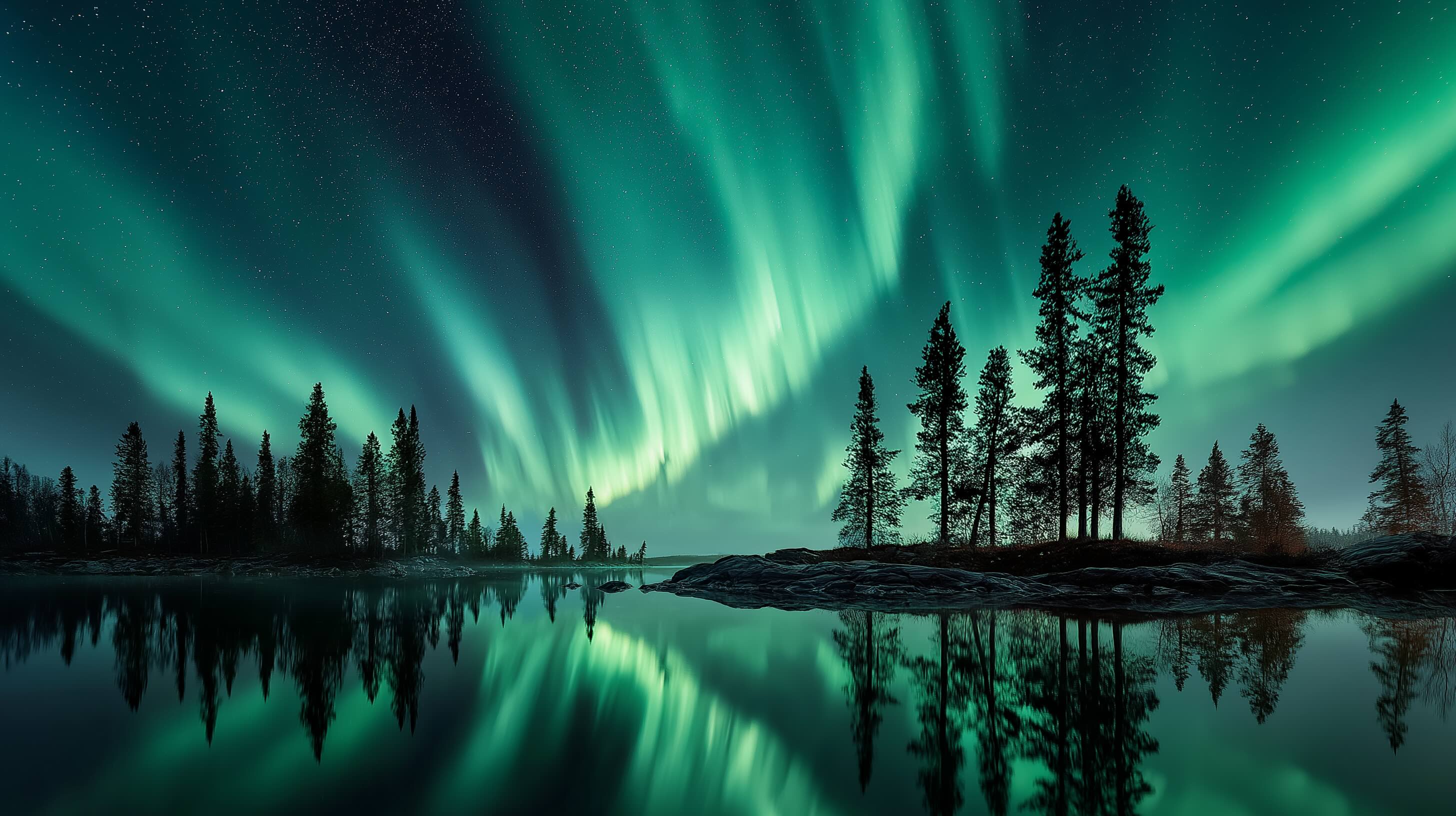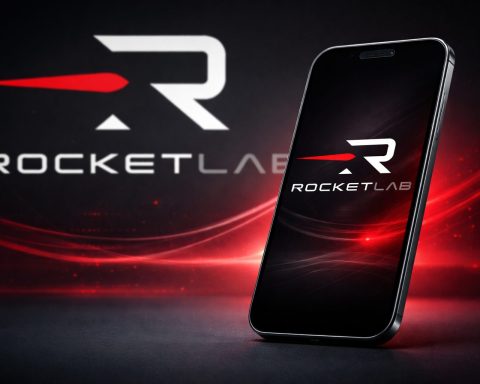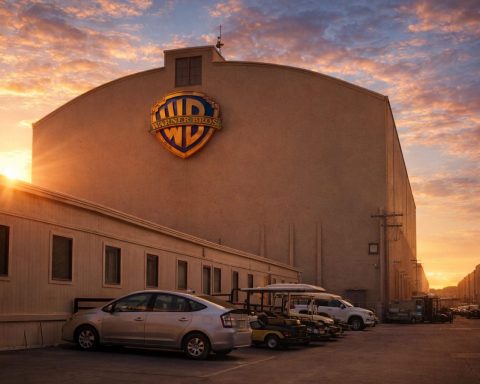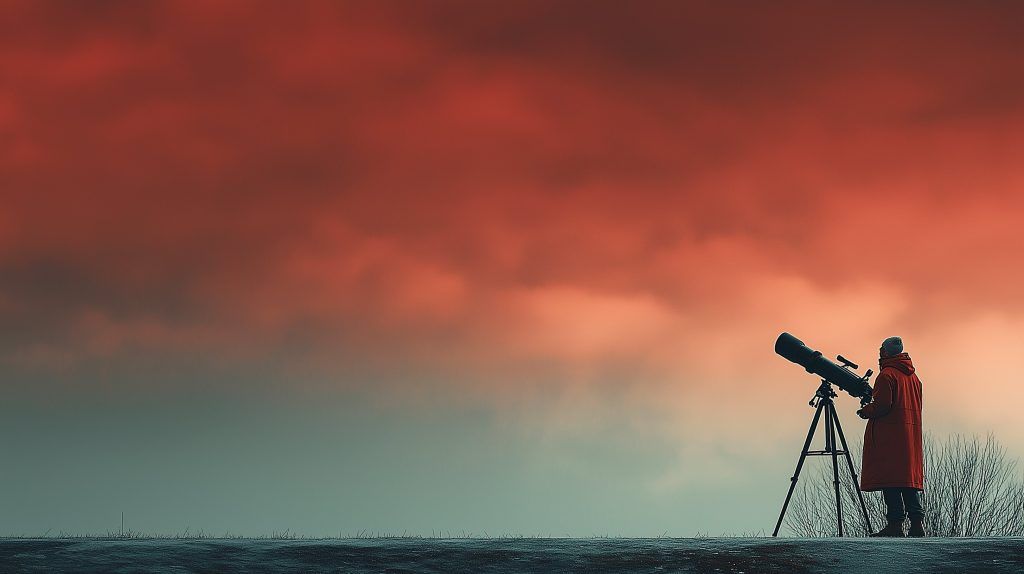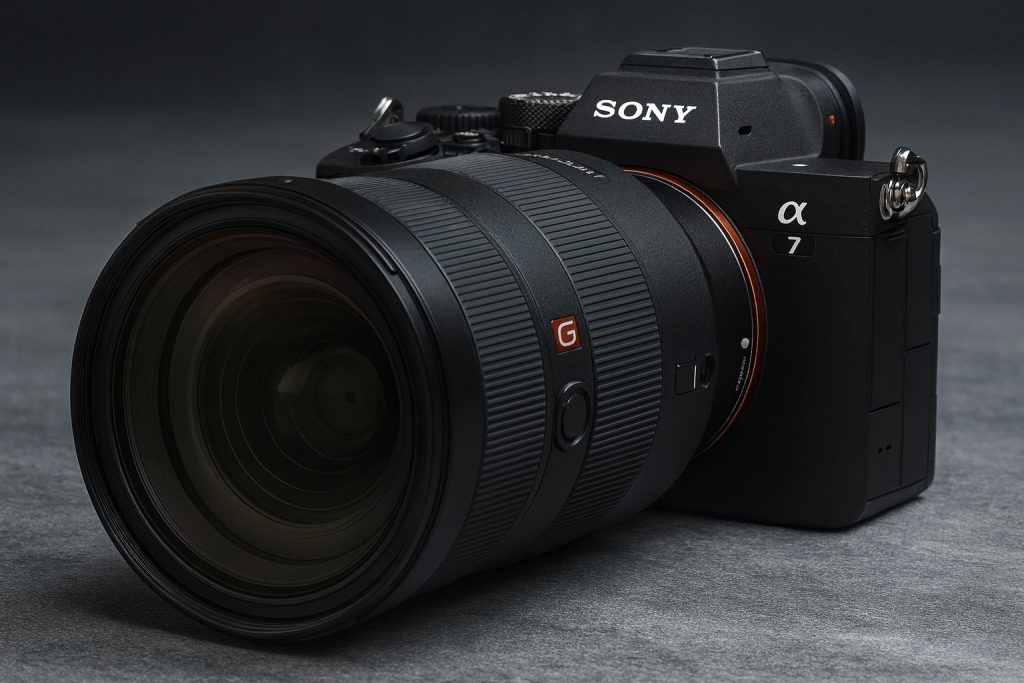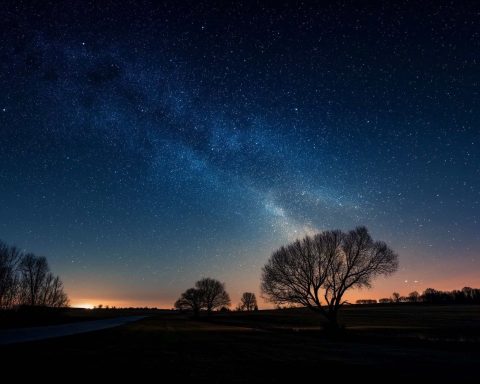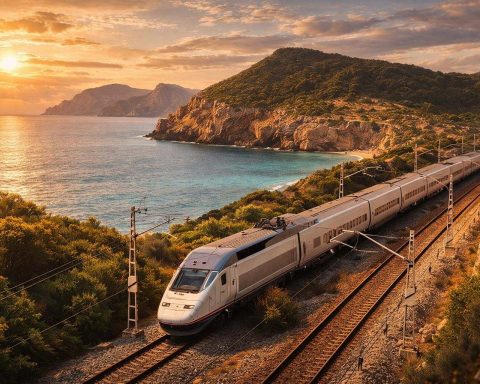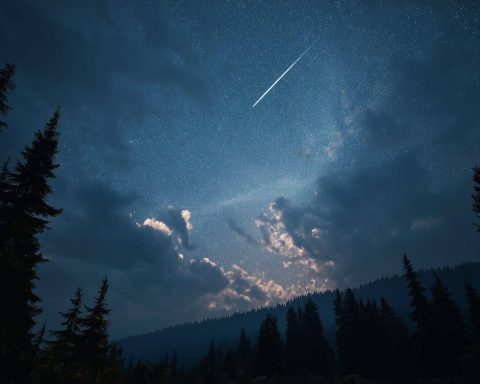- The absolute peak of Solar Cycle 25 is expected around July 2025, with about 115 sunspots mid-year.
- Noaa SWPC recorded a G2 geomagnetic storm on August 9, 2025, and issued G1–G2 watches on multiple days that month.
- Norway’s Tromsø (69°N), Alta, and the Svalbard archipelago (74–81°N) offer frequent auroras, with best viewing from late September through March and peak darkness November–January.
- Iceland’s prime viewing runs September to April, with the Westfjords and northern Iceland offering the clearest skies near popular spots like Thingvellir National Park and the Reykjanes Peninsula.
- Yellowknife in the Northwest Territories (62°N) experiences about 240 aurora nights per year due to its inland, clear-sky climate.
- Churchill, Manitoba (58°N) is a top aurora spot under the oval with peak viewing in February–March and minimal light pollution.
- Fairbanks, Alaska (65°N) is one of the most consistent aurora locations, with frequent displays from late August through April.
- Abisko, Sweden (68°N) is famed for a “blue hole” of clear skies and the Aurora Sky Station, with a season from early fall to early April and strong winter clarity.
- The equinox periods in March and September boost geomagnetic activity, increasing the likelihood of bigger auroras around those times.
- New Zealand’s South Island sites such as Stewart Island (47°S) and Tekapo offer southern auroras mainly from March to September, typically requiring Kp 5+ storms, with Antarctica providing frequent displays.
Where and When to See the Northern Lights and How to Photograph Them
The aurora borealis (Northern Lights) is poised for its most spectacular displays in years. With the Sun nearing solar maximum in 2025, increased solar storms are supercharging the auroras, making them brighter and visible further from the poles [1] [2]. This comprehensive guide covers where and when to see the Northern Lights – from Arctic hotspots like Norway and Canada to southern aurora outposts in New Zealand – plus expert forecasts, scientific updates, and how to photograph the aurora like a pro. Get ready to plan your aurora adventure during the peak of the solar cycle!
Best Places in the World to See the Northern Lights
The Northern Lights are typically seen in high-latitude regions under the auroral oval (a ring around Earth’s geomagnetic poles). Below we compare top aurora destinations around the globe – what makes each special and when to visit for the best chance of a brilliant display:
- Norway (Tromsø, Svalbard & Alta): Northern Norway lies well above the Arctic Circle and experiences polar night in winter, meaning long dark hours ideal for aurora viewing [3]. Tromsø (69°N) is a popular “Gateway to the Arctic” with many tours and easy access to wilderness areas; Alta (called the “City of the Northern Lights”) boasts clear skies and an aurora observatory; and the remote Svalbard archipelago (74–81°N) offers true polar darkness and an extended aurora season [4] [5]. The best time here is late September through March, with peak darkness November–January. These locations’ combination of high latitude, long winter nights and relatively clear, dry weather (especially inland or coastal Alta) yields frequent auroras dancing across stunning Nordic landscapes [6] [7].
- Iceland: Sitting just below the Arctic Circle, Iceland offers auroras amid otherworldly scenery of volcanoes, glaciers and waterfalls. Prime viewing is from September to April when nights are dark [8]. The Westfjords and northern Iceland have the clearest skies and longest nights [9]. Even near Reykjavík, you can catch auroras by escaping the city lights – popular spots include Thingvellir National Park and the Reykjanes Peninsula [10]. Winter weather can be cloudy, but cold clear nights bring spectacular displays. Iceland’s advantage is easy access and many tour options, though it’s further south than Scandinavia so very strong geomagnetic activity (high Kp) helps for overhead auroras.
- Canada (Yukon, Northwest Territories & Churchill): Canada’s far north is directly under the auroral oval, making it one of the world’s best aurora regions. In the Northwest Territories, Yellowknife (62°N) is famed for its extremely high aurora frequency – locals boast of ~240 aurora nights a year thanks to clear skies and inland climate. In the Yukon, towns like Whitehorse or Dawson City also see regular auroras with mountain backdrops. Meanwhile, Churchill, Manitoba (58°N) on Hudson Bay is a top location under the oval with minimal light pollution and often clear winter skies [11]. Churchill’s peak viewing is February–March, when nights are long and auroras frequent [12]. (Bonus: go in late fall to combine auroras with polar bear sightings, though aurora activity is slightly less reliable then [13].) Canada’s aurora hotspots have dedicated lodges and tour operators, and tend to be cold but relatively dry in mid-winter – perfect for bright auroras blazing across the sky.
- Alaska (Fairbanks): Northern Alaska lies under the same auroral band as Canada’s Yukon. Fairbanks (65°N) in central Alaska is considered one of the most consistent places on Earth for auroras, with frequent displays from late August through April [14]. Its interior location means clearer skies (and colder temperatures) than coastal areas. Peak viewing is in the heart of winter, and many travelers base in Fairbanks or nearby resorts (some offer heated “aurorium” cabins or outdoor hot springs for comfort). Fairbanks’ latitude and relatively accessible location make it a top choice for U.S. aurora chasers – on a good night, curtains of green and purple light dance overhead for hours.
- Finland (Lapland): The Lapland region of northern Finland is another aurora paradise. Around sites like Rovaniemi, Saariselkä or Kakslauttanen (about 68°N), you can witness the Lights roughly every other clear night between September and March [15]. While December–February are most popular for tourism, the equinox periods (fall and spring) actually bring the most geomagnetic activity [16]. Finnish Lapland is known for its “aurora igloo” hotels and glass-roof cabins that let you watch the sky from a cozy bed. Farther north near Utsjoki or Nuorgam (70°N+), auroras occur even more frequently. Overall, Finland offers dark boreal forests, frozen lakes, and reliable auroras – with a side of Finnish culture and winter fun (like dog sledding) to round out the trip.
- Sweden (Swedish Lapland): The far north of Sweden (Kiruna and Abisko, ~68°N) sits in the same auroral zone as Finnish Lapland. Abisko in particular is renowned for a unique microclimate that creates a “blue hole” of clear sky in an area often cloudy – making it one of the most reliable spots to see auroras in Europe [17]. The aurora season runs from early fall to early April, with deep winter offering all-night darkness. By January, northern lights can be seen throughout Swedish Lapland on most clear nights, tapering off in April [18]. Abisko National Park even has an Aurora Sky Station for nighttime viewing. Expect vivid pink and green streaks dancing above snow-covered mountains and frozen lakes [19].
- Scotland: While far from the Arctic, northern Scotland (around 58–60°N) occasionally witnesses the “Mirrie Dancers,” especially during strong solar storms. The northern Scottish Isles share latitude with parts of Alaska and Norway [20]. During high solar activity, auroras can be visible on dark, clear nights in areas like the Shetland and Orkney Islands, the far north Highlands (Caithness, Sutherland), and even as far south as the Cairngorms or Aberdeenshire on rare occasions [21]. Optimal time is the winter months (October–March) on moonless nights. Scotland’s auroras tend to glow low on the horizon (often as a green or red haze) unless the solar storm is very strong. Experts note: in late February 2024, an intense storm produced auroras seen across the UK and Europe [22], underscoring that solar cycle peak conditions are allowing auroras at unusually low latitudes. If you’re in Scotland during a forecasted geomagnetic storm (Kp 6–7+), head to a dark northern coastline – you just might catch the Lights flickering above the North Sea.
- Russia (Kola Peninsula & Siberia): Northern Russia’s vast expanse offers many aurora-viewing opportunities, though infrastructure for travelers is more limited. The Kola Peninsula in northwest Russia (e.g. around Murmansk, 68°N) is a noted aurora region similar to neighboring Finnish Lapland. In central Siberia, locations along the 60–70°N band (northern Yakutia, etc.) see auroras frequently but are extremely remote. If you do venture to Russia’s Arctic (on an expedition cruise or otherwise), winter nights can unveil spectacular auroras shimmering over tundra and ice. For example, Murmansk’s latitude and coastal setting provide regular auroras from late August to April – similar to Tromsø’s climate. Just be sure to bundle up; interior Siberian spots like Oymyakon are some of the coldest inhabited places on Earth!
- Southern Hemisphere (New Zealand & Antarctica): The aurora australis (Southern Lights) is the Southern Hemisphere’s equivalent light show. It’s most often seen in Antarctica and the Southern Ocean, but during strong geomagnetic storms it can illuminate southern sky horizons in places like New Zealand’s South Island and Tasmania (Australia). New Zealand is the most accessible country for aurora australis chasing – especially far-south areas like Stewart Island (47°S), the Catlins coast, Lake Tekapo, or Aoraki/Mt. Cook National Park [23] [24]. The best months are March to September (New Zealand’s autumn and winter), with June–July offering long nights [25]. Because the southern magnetic pole is more remote (over Antarctica), sightings in NZ or Tasmania require a moderately strong solar storm (Kp 5+). When conditions align, observers are treated to ethereal green and pink glows on the southern horizon, or even overhead rippling curtains in extreme events. Antarctica, of course, delivers unbelievable aurora displays – the auroral oval there can produce continuous lights on the dark winter sky. Scientists overwintering at research stations often report auroras almost nightly. Some Antarctic cruise expeditions in late March can also reveal auroras if solar activity cooperates. While few will travel only to Antarctica for auroras, 2025’s solar peak will make the southern lights increasingly common even into southern Australia, New Zealand, and Patagonia [26] (where normally they’re rare). Fun fact: There are even “aurora flights” – chartered planes from New Zealand or Australia that chase the southern auroral oval at night, offering passengers a chance to see the lights from 40,000 feet!
Bottom line: Aim to position yourself inside or near the Arctic/Antarctic Circle, under dark skies with minimal light pollution. The closer to the poles, the more frequently you’ll see auroras even during minor solar activity [27] [28]. Locations at slightly lower latitudes (Scotland, southern NZ, etc.) require stronger solar storms to deliver a good show, but 2025’s heightened solar activity means those big storms are more likely than usual [29] [30]. Wherever you go, give yourself a few nights to account for unpredictable local weather – clear skies are a must, as even a faint cloud layer can hide the aurora. Many top spots (Norway, Iceland, Lapland, etc.) have aurora tour guides who know the local microclimates and can drive you to clearer skies if needed [31].
When to See the Northern Lights: Seasons, Cycles & Time of Night
Darkness and clear skies are the fundamental requirements to see the aurora. That means local season and time of day matter immensely:
- Best Months: In general, late fall through winter and early spring are the prime aurora seasons in each hemisphere. For the Northern Hemisphere, late September to March are ideal, with December–February offering the longest nights [32]. In deep winter at high latitudes, the Sun may not rise at all for weeks (“polar night”), providing maximum dark hours. These cold months also often bring clear, stable high-pressure weather (very cold air can mean less cloud cover [33]). By contrast, summer is a poor time in polar regions – around the summer solstice, the high latitudes experience midnight sun or twilight all night, so the sky never gets truly dark [34]. (For example, visiting Arctic Norway in July means 24-hour daylight – the aurora might be happening above you, but you won’t see it against a bright sky!) In the Southern Hemisphere, March to September corresponds to fall and winter – for instance, aurora activity in New Zealand peaks in June–July (long nights) but can be seen as early as March or as late as September given dark skies [35] [36].
- Moon Phase: Darkness is also influenced by the Moon. A bright full moon can wash out faint auroras and stars, much like light pollution does. Planning your aurora hunting around the new moon or crescent phases will improve visibility of subtle aurora details [37]. (That said, strong auroras can still be seen under a full moon – they’ll just appear a bit subdued.) If you’re booking an aurora trip, check the lunar calendar and try to schedule when the moon is absent or stays below the horizon during the night. Clear, cloudless nights with no moon are the absolute best scenario for aurora watching [38].
- Time of Night: Aurora can occur at any time of night, but typically they tend to be most active around local midnight. Experts (and NASA research) note the window from about 10 PM to 2 AM often brings the strongest auroral activity overhead [39] [40]. During moderate displays, you might not see much in early evening, but as night deepens the auroral oval rotates into position and the probability increases. On very active nights, auroras can start right after dusk and continue well past 2 AM. Still, as a rule, plan to stay up late – many great sightings happen after midnight, so don’t turn in too early if the forecast is promising (grab a nap in the afternoon if needed!). Aurora expert Tom Kerss advises perseverance: arctic nights are cold and long, but staying out “until after midnight” maximizes your odds of catching a vivid display [41].
- Seasonal Auroral Peaks (Equinox Effect): Interestingly, auroras aren’t distributed evenly throughout the year. Both historical data and space physics models show a surge in geomagnetic activity around the equinoxes in March and September [42] [43]. During these times, Earth’s orientation relative to the solar wind enhances the likelihood of magnetic reconnection and geomagnetic storms (often called the “equinox cracks” in Earth’s magnetosphere). The result: bigger and more frequent auroras around early spring and early fall. For example, late September 2024 saw a spate of strong auroras across Europe and North America, and scientists expect March & September 2025 to likewise offer potent auroral activity [44] [45]. The caveat for travelers is that early fall and late winter also have rapidly changing daylight hours – e.g. by late March, Arctic Europe starts to gain daylight quickly, so there’s a balance between strong geomagnetic activity and shrinking darkness hours [46]. Still, if you can time a trip around the equinox (and new moon), you might hit the aurora jackpot. Many aurora tour operators quietly favor March and October as their secret best months due to this geomagnetic boost.
- Weather Patterns: Clear weather is crucial. Different regions have different seasonal weather patterns – for instance, coastal Iceland and Norway can be cloudy in fall/winter due to maritime storms, whereas interior Canada or Siberia might have clearer skies but perhaps more frigid temperatures. It pays to research local climate: e.g. Abisko, Sweden sits in a rain shadow and often has clear skies when surrounding areas are cloudy [47]. In general, cold, stable high-pressure systems are good for auroras (clear air, minimal clouds), while milder wet weather means cloud cover that can thwart aurora viewing. Some classic aurora destinations (Yellowknife, interior Alaska, Siberia) are cold and dry in mid-winter, yielding many clear nights; others (coastal Norway, Scotland) might require being flexible to chase gaps in the clouds. Always check the weather forecast alongside the aurora forecast – you need both a geomagnetic storm and clear skies to see anything. And remember, auroras can happen on short notice, so if it clears up at 1 AM, be ready to head out!
2025–2026 Solar Cycle Peak: Aurora Forecast & Scientific Updates
We are currently in the midst of Solar Cycle 25’s maximum phase – and it’s turning into an aurora watcher’s dream. Solar activity has ramped up significantly since 2022, and scientists predict the Sun’s activity will peak in 2025 [48] [49]. Here’s what that means for the Northern Lights:
- Solar Maximum = Stronger Auroras: The solar maximum is the roughly 11-year peak in the Sun’s magnetic activity, marked by abundant sunspots, solar flares, and coronal mass ejections (CMEs). We are heading into a particularly active maximum – NASA/NOAA officials announced in late 2024 that the Sun had already exceeded predictions for sunspot numbers, and that Solar Cycle 25 may be stronger than the last one [50] [51]. More sunspots and flares mean more charged particles launched toward Earth, which “for aurora chasers, is excellent news: solar maximum means more frequent and vibrant auroras, potentially visible at lower latitudes than usual” [52]. During the weak solar cycle of the 2010s, auroras rarely strayed far from the poles; in the current cycle, even mid-latitude regions like the northern US and central Europe have already seen surprise auroral displays. For instance, The Guardian reported that the Lights “lit up the skies across the UK and Europe” multiple times in late 2024, and experts are optimistic that 2025 will be a great year for aurora viewing [53].
- Timeline of the Peak: Scientists estimate the absolute peak of Solar Cycle 25 will occur around July 2025 (this is when sunspot counts are expected to max out) [54]. This aligns with NOAA’s forecast of ~115 sunspots in mid-2025 [55]. Astrophysicist Dr. Renate Mauland-Hus explains that as of 2025 we are in the maximum phase: “We’re in solar cycle 25… In October 2024, scientists announced the Sun had reached its solar maximum period, predicted to last around a year or so. Therefore, in 2025, we are currently in a period of high solar activity.” [56]. She notes that the solar cycle’s peak can only be confirmed in hindsight, but current indicators suggest solar max is happening now through 2025. The good news is that auroral activity often stays strong even after the sunspot peak. “Aurora activity can often peak after solar maximum, meaning that the next couple of years will likely be an exciting time for aurora watchers as well,” Dr. Mauland-Hus says [57]. In other words, late 2025 and 2026 should continue to produce frequent auroras, even as the Sun begins the gradual decline toward solar minimum. This was true in past cycles: the year or two following the sunspot peak often had many geomagnetic storms.
- Bigger Storms and Farther-Traveling Lights: A hallmark of this solar max has been unusually strong geomagnetic storms. In late April 2023, a severe CME impact sparked some of the strongest auroras in decades, seen as far south as New Mexico and southern Europe (scientists said it might have been among the most intense auroral events in 500 years) [58]. NOAA and NASA have observed that even routine solar wind and flares in 2024–25 are triggering G1 to G3 level storms regularly [59]. In fact, NOAA’s Space Weather Prediction Center (SWPC) recorded a G2 (Moderate) geomagnetic storm on August 9, 2025 [60], and issued watches for G1–G2 storms on multiple days that month [61] – a clear sign that the Sun is restless. During that early August 2025 storm, auroras were photographed in places much farther from the poles than usual. Solar experts expect more episodic “aurora outbreaks” in 2025–26, where a series of flares or a fast solar wind stream causes consecutive nights of lights. Each storm is different, but at solar max there’s a higher chance of the big ones that push auroras into new territory (e.g. overhead in Scotland or the northern U.S., and visible on the horizon as far south as 40° latitude or below in extreme cases).
- Expert Voices: Scientists and aurora researchers are closely watching this solar cycle. “During solar maximum, the number of sunspots, and therefore the amount of solar activity, increases,” explains Jamie Favors, director of NASA’s Space Weather Policy program [62]. “This increase in activity provides an exciting opportunity… but also causes real effects at Earth,” she says – including more visible auroras but also potential impacts on satellites and power grids [63]. Another expert, Prof. Mathew Owens (University of Reading), noted that the last solar max (2014) was unusually weak, but “this upcoming solar maximum… may return to average values,” meaning space weather will be more intense than a decade ago and “you’ll likely see auroras… more frequently at different latitudes” as a result [64]. In practical terms, 2025 could bring the most widespread auroral sightings in 20+ years. Already, Dr. Tamitha Skov, a space weather scientist popularly known as the “Space Weather Woman,” has been highlighting frequent G1/G2 storm alerts on social media and advising skywatchers in the northern U.S. and Europe to be alert for auroras on clear nights. And in a recent interview, Dr. Renate Mauland-Hus emphasized: “The solar cycle is now in its maximum period, and we have already experienced high aurora activity in many locations that don’t usually get that much of a display… and the next couple of years will likely be an exciting time for aurora watchers.” [65].
- Official Forecasts & Alerts: To stay updated, tap into official aurora forecast services. NOAA’s Space Weather Prediction Center (SWPC) is the U.S. government’s official source for space weather alerts; they issue geomagnetic storm watches (G1, G2 etc.) days in advance and provide real-time aurora visibility maps on their website [66] [67]. For example, NOAA’s online Aurora Dashboard shows a live 30–90 minute aurora forecast map based on the OVATION model [68] – this indicates where auroras are predicted right now and in the next hour, complete with a glowing oval over the poles that turns red during intense activity. Another excellent resource is the University of Alaska Fairbanks Geophysical Institute’s Aurora Forecast, which offers a 3-day aurora forecast by rating each night’s probability on a scale (and even hourly trends) [69]. These official sources consider the current solar wind conditions and upcoming solar events to tell you when a light show might occur. As 2025 unfolds, check them frequently – you might see alerts like “G3 (Strong) storm watch for March 14–15” which is a green light (no pun intended) to seek out dark skies.
In summary, 2025–2026 is the time to chase auroras. We are in a solar max that is already delivering on its promise of bigger, brighter auroras that reach farther from the polar realms [70] [71]. Keep an eye on space weather news – a headline about a “solar flare” or “geomagnetic storm watch” often means the Northern Lights might come out to play in the coming nights. And if you’ve always dreamed of seeing the aurora, the next two winters will likely offer your best chance this decade to witness the sky’s most enchanting spectacle.
How to Photograph the Northern Lights: Tips for Beginners & Experts
Seeing the aurora is one thing – capturing it in photos is another challenge entirely. The good news is that with the right techniques (and a bit of patience), you can take stunning pictures of the Northern Lights even if you’re not a professional photographer. In fact, today’s camera technology – from advanced DSLRs to the latest smartphones – makes aurora photography more accessible than ever. “The good news is that you can take incredible photographs of the northern lights whether you’re using a DSLR camera or just your smartphone,” notes aurora photographer Brendan Goodenough of Timeanddate.com [72]. Below, we share how to photograph auroras using various gear, plus techniques to get the best results:
Essential Gear and Settings (DSLR/Mirrorless Cameras)
If you have a DSLR or mirrorless camera, you’re equipped to produce high-quality aurora images. These cameras allow full manual control, which is key for night photography. Here are aurora photography basics for such cameras:
- Use a Tripod: This is non-negotiable. Auroras require long exposures (several seconds), so a sturdy tripod is crucial to keep the camera steady [73]. Even a slight shake will blur your photo. Set up on stable ground, shielded from wind if possible. Also consider using a remote shutter release or 2-second timer to avoid jostling the camera when you press the button [74].
- Lens Choice: A wide-angle lens with a fast aperture will capture the broad sweep of the sky and maximize light gathering [75]. Typically, something in the 14mm–24mm range (full-frame equivalent) is ideal, with an aperture of f/2.8 or lower (f/2, f/1.8) preferred. The wider the aperture, the more light you get on the sensor – which is critical for faint light like auroras. Many aurora chasers love lenses like 14mm f/1.8 or 20mm f/1.4. Focus the lens to infinity (manual focus is usually necessary in the dark; use live view and magnify a bright star to fine-tune focus).
- ISO and Exposure: Start with a relatively high ISO setting, such as ISO 800 up to 1600 or 3200 [76]. Higher ISO makes the sensor more sensitive to light, but adds noise – find a balance your camera can handle. Modern full-frame cameras can often shoot ISO 3200 or 6400 and still produce clean images with some post-processing noise reduction. Next, set your aperture to its widest (e.g. f/2.8 or f/1.8) to let in maximum light [77]. Then choose a shutter speed based on aurora activity: for very active, fast-moving auroras, use a short exposure (1–5 seconds) to preserve detail in the curtains and rays [78]. Fast-moving auroras can change rapidly; a long exposure would blur their distinct “picket fence” structures. For slower or faint auroras, you can use longer exposures (5–15 seconds, even 20 sec) to soak up more light [79]. Be cautious going above ~15-20 seconds, though – stars will start to trail (streak) due to Earth’s rotation, and bright auroras will wash out. A handy rule is the “500 rule”: divide 500 by your focal length (for full-frame sensor) to get the max exposure (seconds) before star trails appear. For example, 500/20mm ≈ 25 seconds maximum, though for auroras often other factors limit you before then.
- Example Settings: Let’s say you’re in Abisko with a moderately active aurora overhead. You might use ISO 1600, f/2.8, 5-second exposure to start. Check your shot: if it’s too dark, increase ISO or lengthen shutter a bit; if aurora is washing out or too bright, shorten exposure or drop ISO. Always review your histogram if possible – you want the aurora’s brightness to be captured without blowing out (clipping) the highlights.
- Capture RAW: Always shoot in RAW format (not JPEG) if your camera allows [80]. RAW files preserve much more detail in dark areas and allow you to adjust white balance, exposure, and noise reduction more effectively in post-processing. Auroras often require tweaking after the fact to really bring out the colors and contrast you saw with your eyes (or better, since cameras can pick up colors our eyes might not discern).
- Special Techniques: If you plan to create a timelapse of the aurora, use an intervalometer or built-in timelapse mode. Tip: use relatively short exposures (e.g. 2–5 seconds) with no gap between shots to get a smooth timelapse of moving aurora curtains [81]. Hundreds of such frames can be compiled into a video showing the aurora’s motion in real-time. For advanced shooters, you might try the “stacking” technique for noise reduction: take multiple identical frames and later stack them to average out noise (this works best if aurora isn’t moving too quickly across frames).
- Post-Processing: In editing software (like Lightroom, Photoshop, etc.), you can boost exposure slightly if needed (shooting a bit “dark” is OK to avoid overexposure) [82]. Adjust white balance – aurora photos often look best a bit cooler (around 3500–4000K) to let greens pop against a dark blue sky, but play around. You can enhance contrast to give structure to aurora shapes, and reduce noise carefully so you don’t lose stars or fine details [83]. Raising the “highlights” or whites can help brighten the aurora ribbons without blowing out the overall image [84]. Every photo is different, but the goal is to reproduce the vibrancy of what you saw. Don’t be afraid to experiment in editing – RAW files have a lot of latitude. (Note: If you captured under heavy moonlight or light pollution, you might need to correct for that – e.g. remove a color cast from the sky.)
Smartphone Aurora Photography
You read that right – it’s quite possible now to photograph the Northern Lights with a smartphone camera! In recent years, phone cameras have improved dramatically in low-light conditions, and many have dedicated Night Mode or even specific “Astro” modes. Astrophotographer Tom Kerss affirms that “today’s cameras — including smartphones — capture super, colorful and clear [aurora] shots.” [85] While a phone won’t outperform a full-frame camera, you can still get satisfying images to share. Here are tips to maximize your phone’s capabilities [86] [87]:
- Use Night Mode: Most newer phones (iPhone 11 and up, Google Pixel series, Samsung Galaxy, etc.) have a Night Mode that automatically takes a longer exposure in low light. Enable this feature – it is designed to pull out detail in dark scenes. For example, iPhones will do up to a 3-second handheld exposure in Night Mode (or longer if on a tripod), and Google Pixel’s Astrophotography mode can do multiple-second exposures to capture stars and auroras.
- Stabilize the Phone: Just like with a big camera, stability is key. Mount your phone on a tripod or at least prop it against something solid [88]. There are many inexpensive phone tripod adapters. If you don’t have one, improvise – even placing the phone on a rock or car roof (using a bean bag or scarf to angle it) can work. You need the phone rock-steady during the exposure (which could be 1–10 seconds). Use your headphone or Bluetooth remote as a shutter release, or the phone’s self-timer, to avoid shaking it when you tap capture [89].
- Manual Controls (if available): Some phones or camera apps allow Pro mode where you set ISO, shutter, focus, etc. If so, treat it like a mini DSLR: try ISO 800-1600, shutter ~5-10 sec, focus at infinity (if manual focus available) [90]. On many phones, even if you can’t manually focus, you can lock focus by tapping a distant light in the sky. Set the exposure and take a test shot. Adjust as needed – you may find 10 seconds at ISO 1600 captures a faint aurora. Be mindful: beyond ~10 seconds, stars will trail and the phone sensor might accumulate a lot of noise or hot pixels.
- Apps: There are specialized apps (like NightCap for iOS, or ProCam, etc.) that let you force longer exposures or stacking on iPhones, which can help capture auroras. On Android, some phones (e.g. Google’s Pixel, Samsung) have built-in modes; if not, try a manual camera app that supports long exposure. These can sometimes extend exposure beyond the stock camera’s limits and give you RAW files for editing.
- RAW and Editing: If your phone can shoot RAW (many can, using the Pro mode or apps), use it – you’ll get more flexibility to brighten and reduce noise afterward [91]. Even the JPEGs from Night Mode can be edited: increase the contrast a bit, reduce color noise, and you’ll often reveal a surprisingly good shot. There are mobile apps or you can transfer to a computer for touch-ups.
- Expectations: A smartphone likely won’t capture the full grandeur of a bright aurora the way a larger camera can – but it absolutely can snag the green glow and basic structures of the aurora, especially for moderate displays. It’s a great option if you’re traveling light or want quick snaps for social media. Just remember to also experience the aurora with your own eyes; don’t get glued to your phone screen. As Tom Kerss quips, it’s rewarding to photograph the Lights, but “make sure you absorb [their] luminosity and color with your own eyes” too [92] – your memory is as important as the memory card!
New Tech and Gear for Aurora Chasers (2025 Edition)
Aurora photography benefits from the latest advances in camera tech – and 2025’s gear landscape offers some fantastic tools for both hobbyists and professionals. If you’re considering upgrading or buying equipment specifically for Northern Lights shooting, here are some notable cameras and gadgets (with expert recommendations):
- Nikon Z8: Released in 2023, the Nikon Z8 has quickly earned praise as one of the best cameras for astrophotography. It features a 45.7 MP full-frame sensor with a stacked design and excellent low-light performance. Reviewers note it has “excellent low-light performance and some astro-specific features”, making it arguably “the best camera for astrophotography on the market.” [93] For auroras, the Z8’s high ISO performance and resolution mean you can capture detailed, large prints of the sky. It also offers illuminated buttons (handy in the dark) and in-body stabilization if you do any hand-held night shots or video.
- Sony A7S III: Sony’s A7S III is a low-light monster often touted for night sky work. With only a 12 MP full-frame sensor, each pixel is huge and sensitive, yielding extremely clean images at high ISOs. It’s so good in low light that one review said its lower resolution “is a dream for astro shooting as fewer pixels mean less noise” [94]. If your goal is purely aurora and night sky imaging (and video), the A7S III is hard to beat – you sacrifice resolution for unparalleled light sensitivity, capturing faint auroras that other cameras might barely register. It also excels at 4K low-light video, if you plan to film the aurora in motion.
- Canon EOS R8 / R6 Mark II: Canon’s mirrorless lineup has some great options for aurora hunters. The EOS R8, for instance, is noted as an ultralight full-frame camera that “handles high ISO levels exceptionally well” for its class [95]. This makes it a perfect travel-friendly option – you get Canon’s excellent image quality and noise control in a body under 1 lb. The R8 (24 MP) or its bigger brother R6 Mark II (24 MP but with in-body stabilization and better build) both perform admirably for night shoots; they can comfortably shoot ISO 3200–6400. Canon also has fast RF lenses (like the RF 15-35mm f/2.8 or RF 24mm f/1.8) which pair well for auroras. Plus, features like “illuminated” controls (on higher models) and Star autofocus on some Canon models can help. Another option is the older Canon EOS Ra (an astro-modified camera) if deep-sky photography is also your thing – but for auroras specifically, any good full-frame will do.
- OM System OM-1 Mark II: Don’t count out Micro Four Thirds cameras. The new OM System OM-1 Mark II (2024/2025) is highlighted as the “best Micro Four-Thirds” camera for astrophotography [96]. It’s praised for packing special features like Starry Sky AF (an autofocus mode specifically for stars) and Live Composite mode [97]. Live Composite is particularly neat – it lets you capture long exposures without overexposing by compositing only new light (great for star trails or catching sporadic aurora bursts). While a MFT sensor (smaller than APS-C or full-frame) has more noise at high ISO, the OM-1 Mark II mitigates this with computational tricks and is “surprisingly good” at astro work [98]. It’s also extremely compact and rugged, which is advantageous if you’re dog-sledding in Lapland with limited gear. If you prioritize portability or already have MFT lenses, this camera can definitely shoot auroras – just use fast lenses (Olympus/OM System has f/1.2 primes that help offset the smaller sensor).
- Smartphones (Google, Apple, etc.): As mentioned, the latest phones are stepping up in night photography. Google’s Pixel phones are famous for their Astrophotography mode – mount the Pixel 7 or 8 on a tripod, point it at the sky, and it will automatically take a long exposure (up to 4 minutes in some cases, stacking multiple frames) to produce a detailed shot of stars and auroras. iPhones (e.g. iPhone 14/15 Pro) have large sensors and can do up to 30 second exposures with third-party apps. The HONOR 90 was even advertised with an advanced night mode for auroras [99]. While dedicated cameras still outperform them, the gap is closing. The bottom line: flagship smartphones of 2023–25 can capture the Northern Lights decently, especially the vivid greens. Just remember to use a tripod and night mode. As an example, during an aurora display in 2025, many travelers in Norway captured the lights on their iPhone 14 Pro and were astonished by the bright green swirls that appeared in the photo – often more pronounced than what their eyes saw.
- Drones: A new frontier in aurora imaging is using drones. It sounds crazy (flying at night, in cold conditions), but some photographers have had success putting a good camera drone up to shoot the aurora from unique vantage points. Drone choice matters: “While any camera drone can work to photograph northern lights, prioritize one with a good low-light sensor and manual shooting capabilities,” advises DroneGirl.com [100]. For instance, DJI’s Mavic 3 Pro has a 4/3-inch Hasselblad camera that can do long exposures (up to 8+ seconds) and high ISO – an ideal candidate for aurora work [101]. In fact, one pilot captured a stunning aurora over Wisconsin using a DJI Mavic 2 Pro, and another in Seattle with a DJI Mini 4 Pro, proving even consumer drones can do it [102] [103]. If attempting this, ensure it’s legal to fly at night in your area and be mindful of battery performance (cold temps shorten flight time significantly). Use manual camera settings on the drone: wide open aperture, raise ISO (maybe 1600-3200), and experiment with shutter 1–4 seconds (too long may introduce drone motion blur). The results can be spectacular: imagine an aerial timelapse of aurora curtains over a snowfield, or above a city skyline. It adds complexity, but for experienced drone pilots, 2025 is the perfect time to try for that viral aurora drone shot. Always fly safe – and bring the drone back at the first sign of geomagnetic interference or if you’re freezing!
Additional Tips for Photographing the Aurora
- Plan and Stay Informed: Successful aurora photography means being in the right place at the right time and ready to shoot. Keep tabs on aurora forecasts (as discussed earlier) – know the Kp index level predicted and what that means for your location. For example, if a Kp 6 storm is forecast and you’re in northern Montana, that’s your cue to head out to a dark site with your gear. Use apps like “My Aurora Forecast” (which can alert you when activity is high) [104]. Also, scout locations in daylight – find interesting foregrounds (trees, a cabin, mountains) that you can incorporate into your composition at night for an even more compelling photo.
- Comfort and Persistence: Aurora hunting often involves hours outside in subzero cold. Dress in layers, wear insulated boots, and use hand/toe warmers so you can operate your camera without risking frostbite [105]. Bring spare batteries (camera batteries drain quickly in cold – keep spares in an inner pocket). Patience is key; you might wait all night and see nothing, or get a brief 5-minute burst of aurora that makes it all worth it. Don’t give up too early – many spectacular auroras occur after midnight when others have already gone to bed. As one expert put it, persevere through the cold and “push yourself to stay up late” if you want the best chances [106].
- Experiment Creatively: Once you get the basic shots, have fun. Try a panorama stitch if the aurora spans the whole sky. Include reflective water in the foreground if available (auroras mirrored in a lake are gorgeous). If the aurora is faint, consider shooting a timelapse or even star trails (where the aurora adds a green glow behind the star circles). Some photographers even light-paint the foreground (briefly illuminating trees or rocks with a flashlight) during the exposure to add context to aurora shots. And if you’re lucky enough to witness an extremely strong aurora, don’t panic! – quickly adjust settings (lower ISO or exposure) to avoid overexposing, and shoot, shoot, shoot. These are the moments you’ll want to capture from different angles and with different techniques.
Finally, remember that no photo can truly replicate the awe of standing under a sky alive with the Northern Lights. So while you should absolutely try to photograph them (it’s a thrilling experience in itself), also take time to lower the camera, look up, and immerse yourself in the moment. The dancing aurora, often rippling in silence across the stars, is one of nature’s most magical performances. Whether you share your shots on Instagram or just keep them as personal mementos, the real treasure is the memory of having witnessed the aurora first-hand.
Aurora Resources and References
To plan your Northern Lights adventure and stay updated on aurora activity, be sure to use these official resources and expert insights:
- NOAA Space Weather Prediction Center (SWPC): The SWPC offers alerts and forecasts for geomagnetic storms. Check their Aurora 30-minute forecast maps for real-time aurora ovals [107], and read their tips for aurora viewing which explain how Kp levels correspond to aurora visibility at various latitudes [108] [109]. (NOAA SWPC is the U.S. government’s official source for space weather – see their site for Aurora dashboards and the latest storm watches.) [110]
- Aurora Forecast Services: The University of Alaska Fairbanks Aurora Forecast gives a 3-day outlook and daily aurora probability for different regions [111]. The British Geological Survey and AuroraWatch UK issue alerts for UK visibility. SpaceWeatherLive.com [112] is a popular site providing Kp index forecasts, solar wind data, and a community of aurora reports. Also consider downloading an app like “My Aurora Forecast & Alerts” which uses your location and alert thresholds to notify you when auroras might be visible [113].
- Expert Blogs/News: Follow outlets like Space.com, Timeanddate’s astronomy news, and science journalists for updates. For instance, Timeanddate’s January 2025 report explained “why auroras could be brighter and more spectacular this year” [114] [115], and Space.com’s aurora guide featured top tips from astronomer Tom Kerss on maximizing your chances (e.g. go to Norway in deep winter and stay up past midnight) [116]. These pieces often include quotes from scientists and photographers that can enrich your knowledge.
- Photography Guides: Check out dedicated how-to articles like “How to Photograph the Northern Lights” (Timeanddate, Feb 2025) [117] or photography websites’ tutorials. Many camera manufacturers (Canon, Nikon, etc.) also publish night photography tips on their blogs. If you’re keen on drone photography, read DroneGirl’s guide on aurora drone imaging for safety and technique advice [118] [119].
With solar max upon us, the Northern Lights are entering a kind of golden era – so don’t miss the opportunity to witness and capture them. This guide has armed you with the where, when, and how; now all that remains is to venture out under those dark, starry skies. Whether you find yourself on a frozen lake in Finland watching green ribbons unfurl above, or on a New Zealand hill catching a rare aurora australis glow, the experience of the aurora will stay with you for a lifetime. Here’s wishing you clear skies and an unforgettable Aurora Borealis adventure in 2025!
Sources: Northern Lights science and destination info were synthesized from expert sources including NASA/NOAA forecasts [120] [121], The Guardian and Adventure World travel guides [122] [123], and astronomy news outlets [124] [125]. Aurora photography tips credit Timeanddate’s astrophotography guide and DroneGirl’s drone photography advice [126] [127], among others. For detailed references, see the inline citations throughout this article. Happy aurora hunting!
References
1. www.businessinsider.com, 2. www.aurora-expeditions.com, 3. www.theguardian.com, 4. www.adventureworld.com, 5. www.adventureworld.com, 6. www.theguardian.com, 7. www.adventureworld.com, 8. www.theguardian.com, 9. www.aurora-expeditions.com, 10. www.aurora-expeditions.com, 11. www.adventureworld.com, 12. www.adventureworld.com, 13. www.adventureworld.com, 14. www.adventureworld.com, 15. www.theguardian.com, 16. www.theguardian.com, 17. www.lonelyplanet.com, 18. www.theguardian.com, 19. www.theguardian.com, 20. www.theguardian.com, 21. www.theguardian.com, 22. www.theguardian.com, 23. rove.me, 24. rove.me, 25. www.skyline.co.nz, 26. www.adventureworld.com, 27. www.aurora-expeditions.com, 28. www.adventureworld.com, 29. www.aurora-expeditions.com, 30. www.swpc.noaa.gov, 31. www.space.com, 32. www.adventureworld.com, 33. www.adventureworld.com, 34. www.swpc.noaa.gov, 35. rove.me, 36. www.skyline.co.nz, 37. www.adventureworld.com, 38. www.discover-the-world.com, 39. www.swpc.noaa.gov, 40. www.adventureworld.com, 41. www.space.com, 42. www.adventureworld.com, 43. www.swpc.noaa.gov, 44. www.adventureworld.com, 45. www.theaurorazone.com, 46. www.swpc.noaa.gov, 47. www.lonelyplanet.com, 48. www.aurora-expeditions.com, 49. www.timeanddate.com, 50. science.nasa.gov, 51. science.nasa.gov, 52. www.adventureworld.com, 53. www.theguardian.com, 54. www.timeanddate.com, 55. www.adventureworld.com, 56. www.timeanddate.com, 57. www.timeanddate.com, 58. science.nasa.gov, 59. science.nasa.gov, 60. www.swpc.noaa.gov, 61. www.swpc.noaa.gov, 62. science.nasa.gov, 63. science.nasa.gov, 64. www.businessinsider.com, 65. www.timeanddate.com, 66. science.nasa.gov, 67. www.adventureworld.com, 68. www.adventureworld.com, 69. www.adventureworld.com, 70. www.businessinsider.com, 71. www.swpc.noaa.gov, 72. www.timeanddate.com, 73. www.timeanddate.com, 74. www.timeanddate.com, 75. www.timeanddate.com, 76. www.timeanddate.com, 77. www.timeanddate.com, 78. www.timeanddate.com, 79. www.timeanddate.com, 80. www.timeanddate.com, 81. www.timeanddate.com, 82. www.timeanddate.com, 83. www.timeanddate.com, 84. www.timeanddate.com, 85. www.space.com, 86. www.timeanddate.com, 87. www.timeanddate.com, 88. www.timeanddate.com, 89. community.spaceweatherlive.com, 90. www.timeanddate.com, 91. www.timeanddate.com, 92. www.space.com, 93. www.livescience.com, 94. www.livescience.com, 95. www.livescience.com, 96. www.livescience.com, 97. www.livescience.com, 98. www.livescience.com, 99. www.honor.com, 100. ide.com, 101. ide.com, 102. ide.com, 103. ide.com, 104. www.adventureworld.com, 105. www.adventureworld.com, 106. www.space.com, 107. www.adventureworld.com, 108. www.swpc.noaa.gov, 109. www.swpc.noaa.gov, 110. science.nasa.gov, 111. www.adventureworld.com, 112. www.adventureworld.com, 113. www.adventureworld.com, 114. www.timeanddate.com, 115. www.timeanddate.com, 116. www.space.com, 117. www.timeanddate.com, 118. ide.com, 119. ide.com, 120. science.nasa.gov, 121. www.adventureworld.com, 122. www.theguardian.com, 123. www.adventureworld.com, 124. www.timeanddate.com, 125. www.theguardian.com, 126. www.timeanddate.com, 127. ide.com
